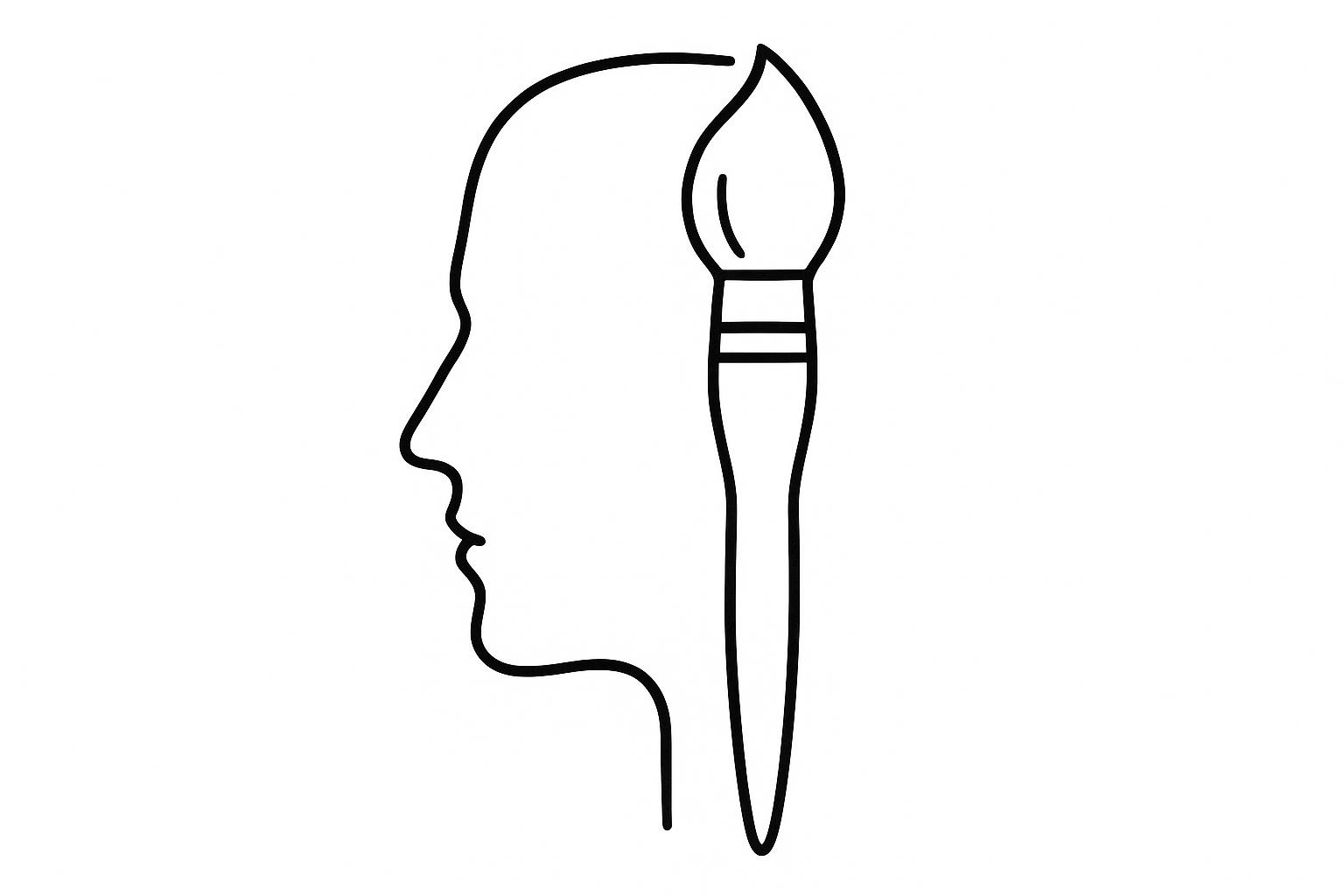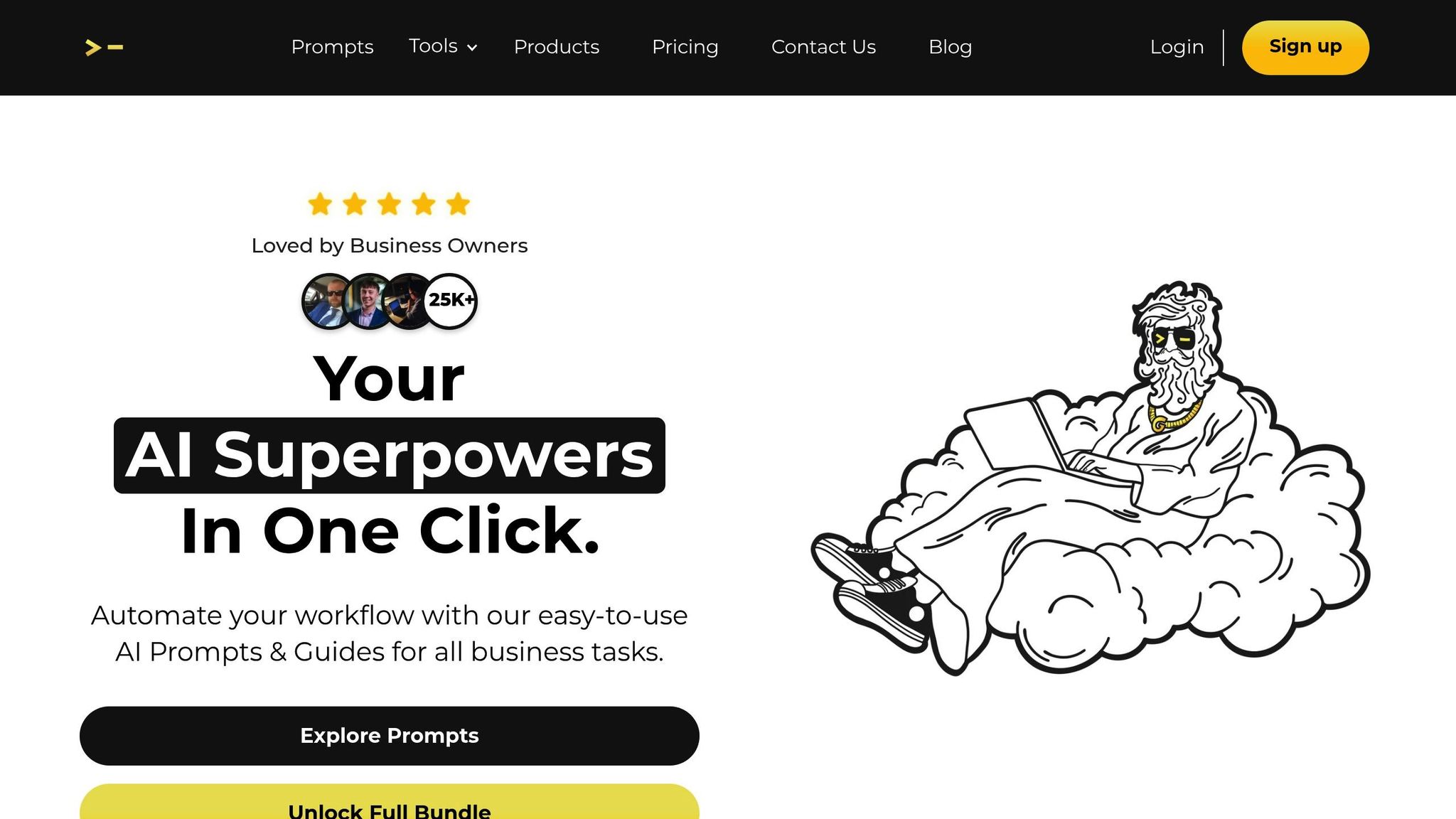
AI image generation can be powerful, but most users make avoidable mistakes that lead to poor results. Here are the top 10 errors and how to fix them:
Pro Tip: Tools like God of Prompt offer pre-tested prompt templates and guides to help you avoid these pitfalls and save time. By focusing on clear, structured prompts and refining your approach, you can achieve better results without frustration.
Here are ten frequent mistakes people make when generating AI images, along with practical tips to help you improve your results. Each issue is paired with a simple solution to make your prompt crafting more effective.
One of the most common pitfalls is using vague prompts, which often lead to disappointing results. For instance, a prompt like "dog in a park" is far too broad. Instead, try something more detailed: "a golden retriever playing fetch in Central Park, on a sunny afternoon, photorealistic style." Start with a clear idea and include specifics to guide the AI toward your vision.
If you skip describing the layout or viewpoint, the AI might generate awkward or unnatural compositions. Be explicit about how you want elements arranged and the perspective you want. For example, instead of saying "person at desk", try: "a person sitting at a desk, viewed from above, with a laptop in front and a coffee mug to the right".
Overloading your prompt with too many details can overwhelm the AI and lead to cluttered, poorly rendered images. Focus on the main subject first, then build up details gradually. Also, avoid contradictory instructions - asking for a "chaotic pile" and "neatly arranged" in the same prompt will confuse the AI.
Failing to define an art style often results in outputs that feel generic or inconsistent. Be clear about the style, medium, or visual reference you want. For example, specify "watercolor painting", "cyberpunk digital art", or "vintage 1950s photo" to ensure the AI matches your aesthetic goals.
AI tools often struggle with human anatomy, leading to distorted faces, extra limbs, or unnatural poses. To minimize these issues, keep the number of people in your image low and clearly describe poses and facial expressions. For professional use, you might need to touch up the image afterward to fix any lingering anomalies.
AI generators usually don't handle text well, often producing unreadable or jumbled results. A better strategy is to generate the image without text and then add any necessary wording later using tools like Photoshop or Canva. For example, an image of a kitchen might look fine until you notice a cookbook with illegible text - a common issue highlighted in a CNET review.
Skipping negative prompts can lead to unwanted elements showing up in your image. By specifically stating what you don’t want - such as "no text, no watermark, no blurry background" - you can help the AI focus on creating a cleaner and more precise result.
Without guidance on lighting and color, images can appear flat or lack impact. Include details about lighting, like "golden hour lighting" or "dramatic shadows," and specify a color scheme, such as a "warm color palette" or "cool blue tones," to elevate the overall look and feel of your image.
Relying only on basic settings limits your creative control. Make use of advanced features like upscaling, inpainting, outpainting, seed control, and model selection to refine your results. These tools can significantly improve the quality and precision of your images.
The first image the AI generates is rarely perfect. Take the time to tweak and refine your prompt. Experiment with small adjustments to find the right balance, but avoid over-editing, as this can introduce new problems. Keep iterating until you achieve the desired outcome.
| Mistake | What Goes Wrong | How to Fix It |
|---|---|---|
| Vague Prompts | AI generates generic, unclear, or unexpected results that don't align with your vision | Add specific details like subject, setting, style, and mood. Instead of "dog in park", try "golden retriever playing fetch in Central Park, sunny afternoon, photorealistic" |
| Missing Layout/Viewpoint | Poor framing, awkward compositions, or unnatural perspectives that feel unpolished | Include details about camera angles, composition, and element placement. Use phrases like "viewed from above", "close-up portrait", or "wide-angle shot" |
| Too Many Elements | Overcrowded images where the AI struggles to render everything properly | Stick to 3-5 main elements. Gradually build complexity and avoid conflicting instructions in a single prompt |
| No Art Style Specified | Inconsistent visuals that lack a clear artistic direction or aesthetic | Include style references like "watercolor painting", "cyberpunk digital art", or "vintage 1950s photography" |
| Ignoring Body/Face Issues | Distorted anatomy, extra limbs, or unnatural facial features | Limit the number of people in scenes, describe poses clearly, and plan for post-editing touch-ups if needed |
| Attempting Text Generation | Garbled, unreadable, or nonsensical text | Generate images without text and add typography later using tools like Photoshop or Canva |
| Skipping Negative Prompts | Unwanted elements like watermarks or visual artifacts that distract from the image | Use negative prompts to exclude items: "no text, no watermark, no blurry background" |
| Forgetting Lighting/Colors | Flat, dull images that lack emotional depth or visual appeal | Specify lighting conditions like "golden hour lighting" and include color schemes such as "warm palette" or "cool blue tones" |
| Basic Settings Only | Limited creative control and missed opportunities to refine the output | Experiment with advanced features like upscaling, inpainting, outpainting, and seed control for more refined results |
| Accepting First Results | Settling for mediocre images instead of achieving your vision | Refine and iterate prompts through multiple generations, making small tweaks until satisfied |
Use this table as a checklist to fine-tune your prompts and avoid common mistakes. God of Prompt’s specialized tools take this a step further by offering resources designed to simplify the process and eliminate trial-and-error.
The platform provides professionally crafted prompt libraries and step-by-step guides to help you achieve better results with less effort.
"It has made my work so much easier" - Terry Aaren, @createfrs
Users have reported saving up to 20 hours a week by using these ready-made, mistake-free prompt structures. With a 4.8 out of 5 rating from 743 reviews and a 7-day risk-free trial, it’s easy to see how structured prompt libraries can transform your AI image generation workflow.

God of Prompt takes the trial-and-error out of AI image generation with a structured approach designed to simplify the process. The platform offers over 30,000 AI prompts tailored for tools like Midjourney, paired with detailed guides to help you steer clear of common pitfalls.
These prompt templates go beyond generic descriptions like "a beautiful landscape." They include specifics such as viewpoints, lighting conditions, art styles, and composition elements - frameworks that have been rigorously tested to deliver consistently better results.
Each resource is packed with step-by-step instructions, breaking down complex concepts into easy-to-follow guidance. You'll not only learn what to include in your prompts but also why certain elements work better. This makes it easier to refine your approach while avoiding issues like cluttered compositions or unclear artistic direction.
For those looking to explore advanced techniques, God of Prompt provides clear examples and practical use cases. Want to master negative prompts or fine-tune lighting and color palettes? The platform explains how to do it effectively, offering tips to address frequent challenges. Each example is designed to tackle specific missteps, ensuring your prompts are optimized for success.
With a customer base of over 17,060 users, the platform has proven its value by saving time and improving results. Instead of relying on guesswork, users benefit from tried-and-true formulas.
"Worth every penny. Our output has drastically increased. Highly recommended."
– Lucas Kendall
God of Prompt also stands out with its iterative refinement approach, offering tested combinations that let you focus on creativity rather than troubleshooting.
"Just got it and it looks amazing. Worth ten times the cost."
– Katherine Thompson, Marketing Specialist
Another standout feature? Lifetime updates. As AI tools evolve, you’ll continue to receive new prompt templates and guides, ensuring you stay ahead of the curve. This commitment to improvement transforms how you approach AI image generation.
Whether you’re crafting visuals for marketing campaigns, business presentations, or personal projects, God of Prompt’s proven structures eliminate guesswork and elevate the quality of your results. By making AI tools more accessible and intuitive, the platform equips you with practical, real-world solutions. For more on how to seamlessly integrate these advantages into your creative process, check out the conclusion.
Creating AI-generated images doesn't have to be a frustrating process. The 10 mistakes we’ve discussed - like crafting unclear prompts or settling for the first result - are hurdles you can overcome with a better understanding of where things go wrong.
Focus on writing structured prompts. Be specific about elements like composition, lighting, art style, and perspective. Don’t forget to include negative prompts and refine your inputs repeatedly to get closer to the results you want.
If you're looking for extra support, God of Prompt offers a robust solution with more than 30,000 tested prompts, detailed guides, smart tagging, and advanced search tools to help you find templates tailored to your needs.
The bottom line? Great AI images start with great prompts. By steering clear of these common mistakes and leveraging the right tools, you’ll be able to bring your creative ideas to life with precision and ease.
Negative prompts act as a guide for the AI, specifying what to leave out when generating images. For example, you can include terms like "no text," "no watermarks," or "no distortions" to steer the AI away from adding unwanted elements.
By explicitly stating what to avoid, you help the AI concentrate on creating images that align more closely with your expectations. Try experimenting with different keywords to fine-tune your results and produce cleaner, more polished visuals.
To elevate your AI-generated images, dive into features that expand your creative possibilities. Start with multi-model options to explore a variety of artistic styles and high-resolution outputs for crisp, detailed visuals. If you're looking for more personalized results, custom training lets you tailor the AI to match your unique preferences.
For editing and refining, tools like inpainting allow you to tweak specific areas, while object removal helps clean up unwanted elements in your images. Want to add a touch of artistry? Use style transfer to infuse your creations with distinctive effects. Lastly, experimenting with detailed prompt controls gives you the ability to fine-tune your results, making them both precise and imaginative.
Specifying an art style is essential when working with AI-generated images because it provides a clear direction for the creative process. By defining the style, you ensure the final image has a cohesive look that aligns with your artistic vision or thematic goals, making the result feel deliberate and well-thought-out.
The chosen art style plays a significant role in shaping the visual tone, mood, and overall feel of the image. Whether you’re looking for a lifelike portrait, a soft watercolor effect, or a sleek, futuristic digital design, giving the AI a clear style to follow helps it produce results that match your expectations. Without this guidance, the output can end up feeling generic or disconnected from what you had in mind.





